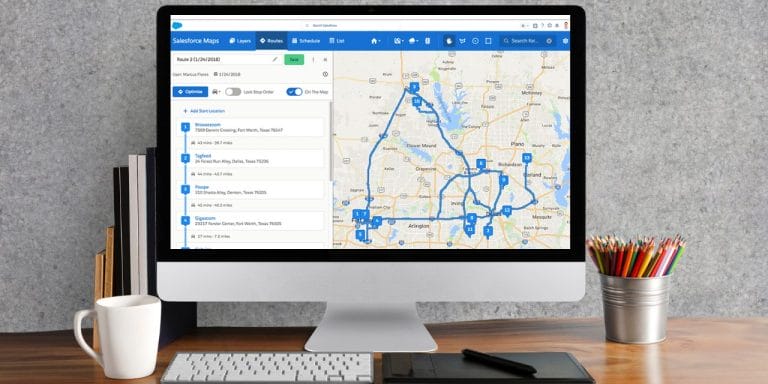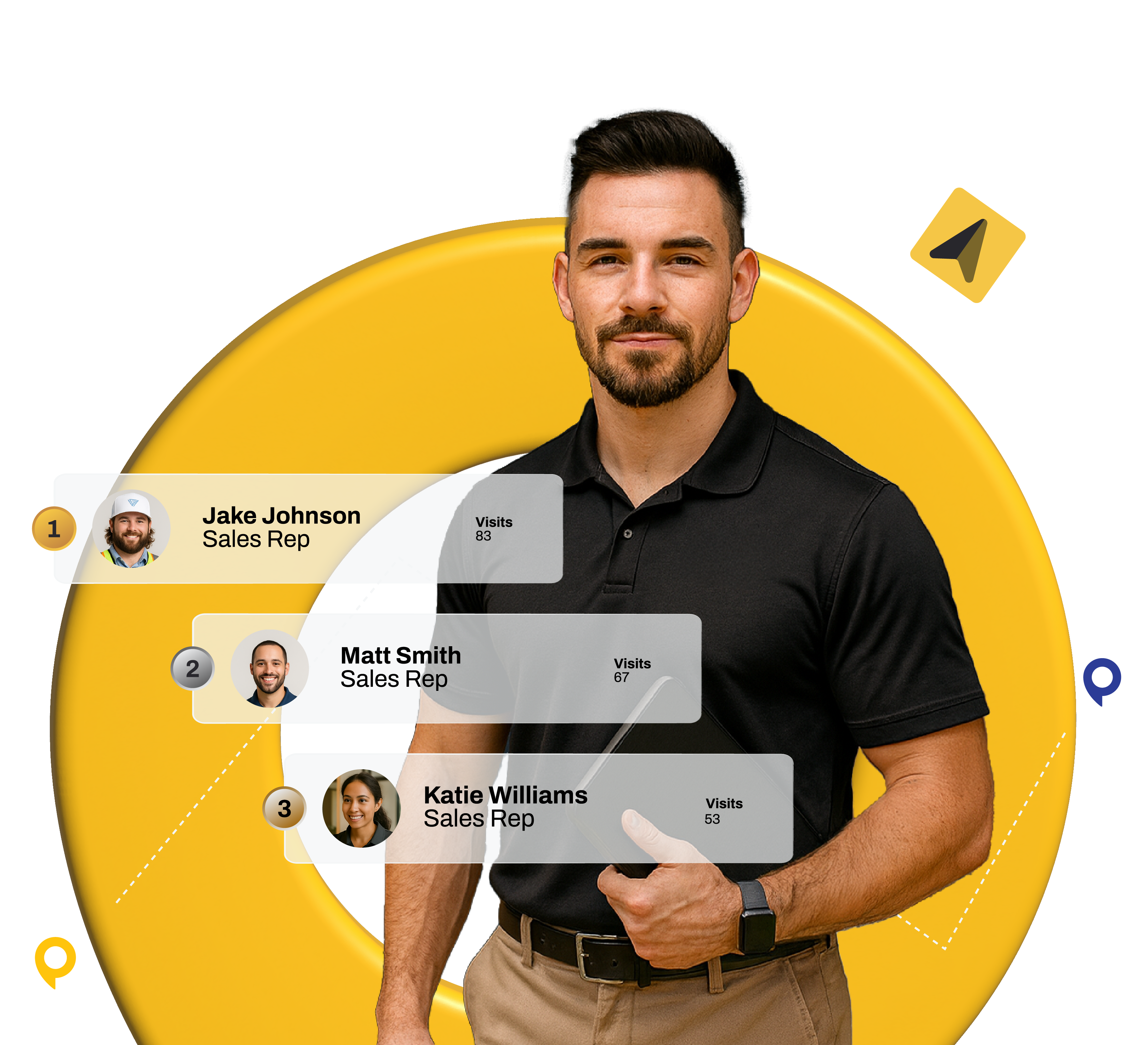Table of contents
- Remote Selling in 2025: The New Field Sales Reality
- What is Remote Selling?
- Why is Remote Selling Important in 2025?
- Top Challenges in Remote Selling
- 13 Remote Selling Best Practices for Reps
- 7 Remote Selling Best Practices for Managers
- Advanced Remote Selling Strategies
- Mistakes to Avoid in Remote Selling
- Essential Tools for High-Performing Remote Sales Teams
- Frequently Asked Questions (FAQ)
- Remote Selling Success Starts with the Right Strategy—and the Right Tools
Remote Selling in 2025: The New Field Sales Reality
Struggling to build trust and close deals from behind a screen? You’re not alone. 80% of B2B sales interactions now happen—at least in part—through digital channels, making remote selling a game-changing skill for for sales teams across industries like roofing, solar, and business services.
Buyers demand flexibility. They want to connect on their terms—via video, phone, email, or chat—and expect speed, personalization, and digital convenience. Teams that master remote selling can unlock more pipeline, accelerate deal cycles, and build relationships at scale.
Hybrid sales—combining remote prospecting, virtual demos, and digital follow-up with targeted in-person meetings—is the new standard. But the backbone of pipeline growth is a robust remote selling motion, powered by the right technology, content, and process.
What is Remote Selling?
Remote selling (or virtual selling) is the process of prospecting, engaging, and closing deals with customers using digital channels, without meeting in person. For example, a rep might source leads on LinkedIn, connect by email, and close the deal over a video call.
Remote Selling vs. Field Sales: Key Differences
| Aspect | Remote Selling | Field Sales |
|---|---|---|
| Engagement | Digital (video, phone, email) | In-person, face-to-face |
| Flexibility | High (work from anywhere) | Limited by geography |
| Cost | Lower (no travel) | Higher (travel, lodging) |
| Buyer Preference | Digital-first for most touchpoints | In-person for complex deals |
Why is Remote Selling Important in 2025?
- 92% of B2B buyers prefer digital engagement.
- Remote selling reduces costs, increases efficiency, and expands reach
- Hybrid sales, combining remote and in-person touchpoints, is now the norm.
There are other advantages to virtual selling, too, including cost and time.
Top Challenges in Remote Selling
- Keeping buyers engaged virtually
- Building trust without face-to-face contact
- Delivering the right content at the right time
- Ensuring accountability and transparency in distributed teams
This guide delivers 20 actionable best practices for remote selling, tailored for both sales reps and managers. Ready to maximize your virtual sales success?
13 Remote Selling Best Practices for Reps
Ready to boost your remote sales game? These proven tactics will help you engage buyers, hit your numbers, and stand out in a crowded digital marketplace.
- Prepare a Dedicated, Professional Workspace. Create a distraction-free zone with reliable internet, a quality webcam, and good lighting. Your environment should signal credibility and focus.
- Master Your Sales Tech Stack. Get fluent with your CRM, video conferencing, chat, and content tools. Know how to share screens, send follow-ups instantly, and log activity on the go.
- Plan Meetings and Demos in Advance. Always set an agenda, prep your visuals, and do a tech check before every call. Anticipate buyer questions and have digital assets ready to share.
- Personalize Every Interaction. Use video when possible. Reference recent buyer activity, tailor your pitch, and leverage CRM data to show you understand their business.
- Be Mindful of Time Zones and Preferences. Schedule meetings at times convenient for your buyers, and confirm their preferred communication channels.
- Use Engaging Visuals and Demos. Bring your solution to life with product videos, infographics, and live screen shares. Visual storytelling keeps buyers engaged and clarifies your value.
- Practice Active Listening and Ask Open-Ended Questions. Let buyers talk. Use silence strategically and dig deeper with follow-ups. This builds trust and uncovers real needs.
- Follow Up Consistently Across Channels. Don’t let deals stall. Use a mix of email, text, phone, and social touchpoints to stay top-of-mind and move opportunities forward.
- Keep CRM and Activity Logs Up-to-Date. Log every call, email, and meeting in real time. This ensures nothing falls through the cracks and gives your manager full visibility.
- Limit Distractions—Schedule Focused Selling Blocks. Block calendar time for prospecting, follow-ups, and meetings. Silence notifications and set clear boundaries with housemates or family.
- Record Meetings for Review and Coaching. With buyer permission, record key calls. Review them to improve your pitch and share with your manager for targeted feedback.
- Leverage Micro-Content and Digital Assets. Use short videos, product sheets, and FAQs to answer objections and reinforce your message. Quick, relevant content wins attention.
- Track Your Own Productivity and Set Daily Activity Goals. Monitor your outreach, meetings, and follow-ups. Set and hit daily targets to build momentum and stay accountable.
7 Remote Selling Best Practices for Managers
Managing a remote or hybrid field sales team requires a new playbook. Here’s how to empower your reps and drive performance from anywhere:
- Set Clear Expectations and KPIs. Define success using key performance indicators such as daily activity minimums, pipeline stages, follow-up cadence, and quota metrics.
- Enable Reps with the Right Digital Content and Tools. Provide a library of micro-content, demo videos, and case studies. Make it easy for reps to access and share assets in real time.
- Run Regular, Focused Team Check-Ins and Pipeline Reviews. Hold weekly standups, pipeline reviews, and one-on-ones. Use data from your CRM and sales engagement platform to guide the conversation.
- Coach with Data—Use CRM and Activity Dashboards for Targeted Feedback. Identify coaching opportunities by reviewing call logs, meeting recordings, and activity metrics. Give specific, actionable feedback.
- Foster Team Culture and Recognition. Celebrate wins—big and small. Run virtual contests, sales leaderboards, and recognition programs to keep morale high and build healthy competition.
- Invest in Ongoing Remote Sales Training and Onboarding. Deliver regular training sessions, peer learning, and digital onboarding paths for new hires. Make learning continuous, not one-and-done.
- Promote Accountability and Autonomy. Let reps own their schedules and KPIs, but maintain visibility through real-time reporting and regular check-ins.
Advanced Remote Selling Strategies
Take your remote sales performance to the next level with these advanced tactics:
- Personalization at Scale: Use AI-powered CRM tools to deliver tailored messages and offers based on buyer behavior and preferences.
- Predictive Analytics: Leverage analytics to identify high-intent leads, forecast pipeline movement, and optimize outreach timing.
- Omnichannel Engagement: Integrate email, phone, video, and social selling into a seamless experience for buyers, ensuring consistent messaging and follow-up.
- Sales-Marketing Alignment: Collaborate with marketing to ensure reps have access to the right content at every stage of the buyer journey. This alignment can increase closing rates by 67% and revenue by over 200%.
- Continuous Feedback Loops: Gather feedback from buyers and your own team to refine messaging, content, and processes in real time.
Mistakes to Avoid in Remote Selling
Even experienced reps can fall into remote selling traps such as:
- Unprofessional backgrounds or poor video quality—first impressions count.
- Talking too much or monologuing—remote selling should be a conversation, not a pitch.
- Failing to prepare or test technology—technical glitches erode trust and momentum.
- Ignoring relationship-building—take time to connect personally, even virtually.
- Not following up or logging activity—pipeline leaks happen when details are missed.
Another major remote selling mistake using no or poor visuals during online meetings.
Visuals make it easier for buyers to understand what sales reps are talking about. They keep buyers engaged in sales conversations, too. Make sure you bring quality images, charts, graphs, and other visuals to all of your virtual sales appointments. Today’s AI-powered tools make this even easier. Solutions like AI video generator, AI voice generator, and add text to video tool can help you quickly create engaging, professional-looking content that captures attention and improves buyer comprehension.
Essential Tools for High-Performing Remote Sales Teams
Success in remote selling hinges on the right tech stack. Equip your team with:
- Mobile-First CRM and Sales Engagement Platforms. Solutions like SPOTIO provide real-time activity tracking, territory management, and seamless integration with your existing workflow.
- Video Conferencing and Demo Tools. Reliable platforms for virtual meetings, live demos, and screen sharing.
- Digital Content Management and Sharing Solutions. Centralized libraries for sales collateral, micro-content, and case studies.
- Productivity Tracking and Reporting Dashboards. Real-time insights into rep activity, pipeline health, and performance metrics.
- AI-Powered Assistants for Coaching and Q&A. Automated tools to answer rep questions, suggest next steps, and surface coaching opportunities.
- Communication Platforms for Team Collaboration. Chat, file sharing, and video huddles to keep distributed teams connected and aligned.
Frequently Asked Questions (FAQ)
Q: How do I keep buyers engaged during remote meetings?
A: Use interactive visuals, ask open-ended questions, and structure meetings with clear agendas. Personalize each interaction and follow up promptly with relevant content.
Q: What’s the best way to onboard new remote sales reps?
A: Combine structured virtual training, peer learning, and regular coaching sessions. Use recorded calls and digital playbooks to accelerate ramp-up.
Q: How do I measure remote sales rep productivity?
A: Track activity metrics (calls, emails, meetings), pipeline movement, and quota attainment in your CRM. Use dashboards for real-time visibility and accountability.
Q: What content works best for remote selling?
A: Micro-content (short videos, infographics, FAQs), case studies, and digital demos are highly effective for engaging prospects and overcoming objections.
Q: How do I build team culture in a remote sales environment?
A: Celebrate wins, run virtual contests, and hold regular team check-ins. Foster open communication and recognize individual and team achievements.
Remote Selling Success Starts with the Right Strategy—and the Right Tools
Remote selling is now the cornerstone of every high-performing field sales team. The most successful organizations aren’t just adapting to digital—they’re thriving by combining process, technology, and a relentless focus on buyer engagement.
Let’s recap the key takeaways:
- Remote selling is here to stay: Digital-first engagement is now the default, with buyers expecting flexibility and speed.
- Challenges are real, but solvable: From keeping buyers engaged to maintaining accountability and culture, the right best practices and tools make a measurable difference.
- Best practices drive results: Dedicated workspaces, tech mastery, personalized outreach, and consistent follow-up are non-negotiable for reps. For managers, clear KPIs, data-driven coaching, and ongoing recognition keep teams aligned and motivated.
- Technology is the force multiplier: Mobile-first CRM, real-time activity tracking, and digital content management platforms—like SPOTIO—empower teams to maximize productivity and pipeline visibility.
Ready to transform your remote sales results? See how SPOTIO’s leading field sales engagement platform gives you the visibility, accountability, and efficiency to outperform the competition.
Book your SPOTIO demo today and unlock the next level of remote selling success.
Note: This article was originally published in September 2022 during the COVID-19 pandemic. It has been significantly revised to reflect the current state of remote selling in 2025.




